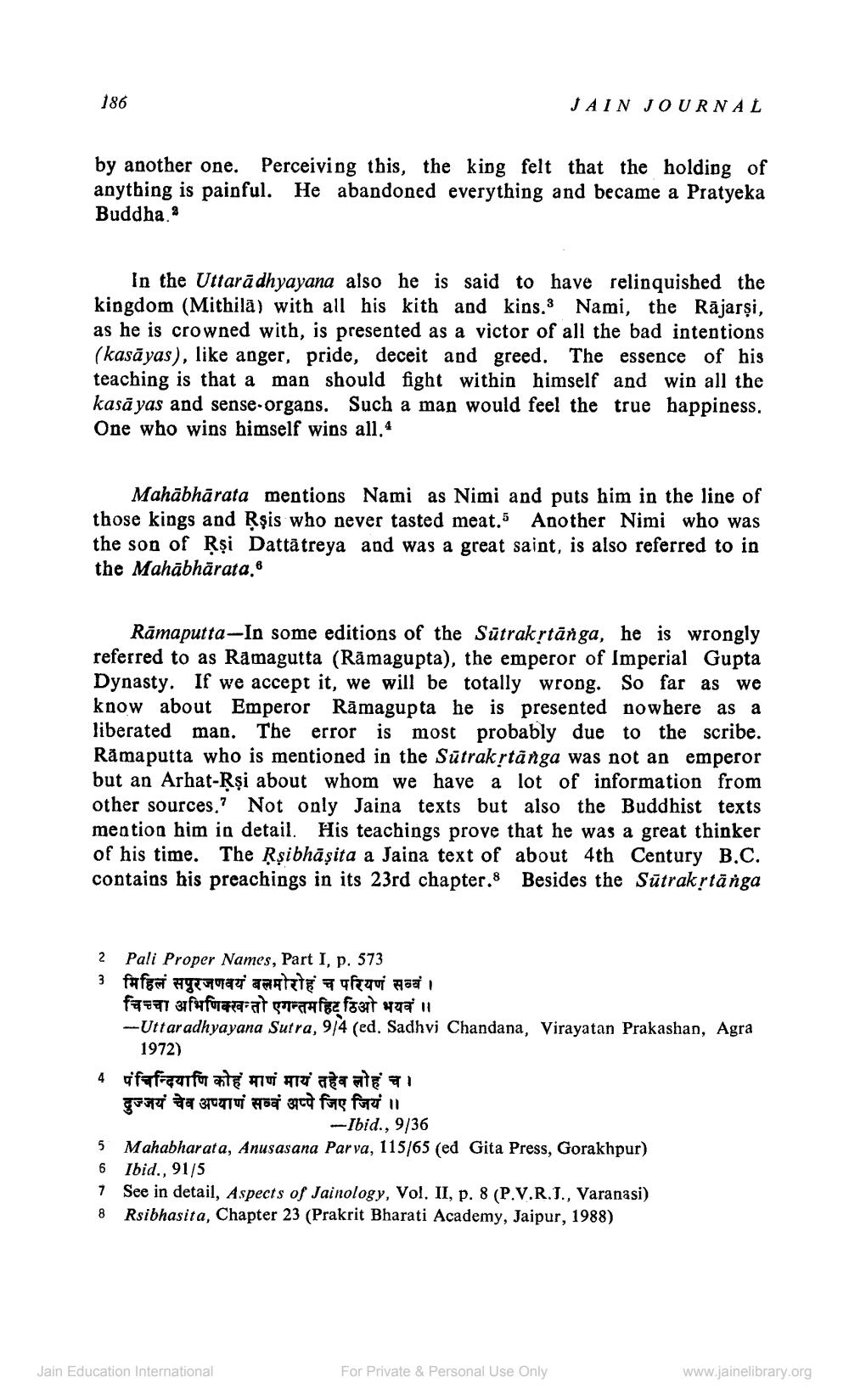________________
186
by another one. Perceiving this, the king felt that the holding of anything is painful. He abandoned everything and became a Pratyeka Buddha 2
In the Uttaradhyayana also he is said to have relinquished the kingdom (Mithila) with all his kith and kins. Nami, the Rājarși, as he is crowned with, is presented as a victor of all the bad intentions (kasāyas), like anger, pride, deceit and greed. The essence of his teaching is that a man should fight within himself and win all the kasayas and sense-organs. Such a man would feel the true happiness. One who wins himself wins all.4
JAIN JOURNAL
Mahabharata mentions Nami as Nimi and puts him in the line of those kings and Ṛşis who never tasted meat. Another Nimi who was the son of Ṛși Dattatreya and was a great saint, is also referred to in the Mahabharata,&
Rāmaputta-In some editions of the Sūtrakṛtānga, he is wrongly referred to as Ramagutta (Rämagupta), the emperor of Imperial Gupta Dynasty. If we accept it, we will be totally wrong. So far as we know about Emperor Rāmagupta he is presented nowhere as a liberated man. The error is most probably due to the scribe. Ramaputta who is mentioned in the Sutrakṛtānga was not an emperor but an Arhat-Rși about whom we have a lot of information from other sources. Not only Jaina texts but also the Buddhist texts mention him in detail. His teachings prove that he was a great thinker of his time. The Rṣibhāṣita a Jaina text of about 4th Century B.C. contains his preachings in its 23rd chapter. Besides the Sūtrakṛtānga
2 Pali Proper Names, Part I, p. 573
3 मिहिलं सपुरजणवयं बलमोरोहं च परियणं सव्वं ।
अभिक्खि तो एगन्तम हिट ठिओ भयवं ॥
-Uttaradhyayana Sutra, 9/4 (ed. Sadhvi Chandana, Virayatan Prakashan, Agra
1972)
4 पंचिन्दियाणि कोहं माणं मायं तहेव लोहं च । दुज्जयं चैव अयाणं सव्वं अप्पे जिए जियं ॥
-Ibid., 9/36
Mahabharata, Anusasana Parva, 115/65 (ed Gita Press, Gorakhpur) Ibid., 91/5
5
6
7 See in detail, Aspects of Jainology, Vol. II, p. 8 (P.V.R.J., Varanasi) Rsibhasita, Chapter 23 (Prakrit Bharati Academy, Jaipur, 1988)
8
Jain Education International
For Private & Personal Use Only
www.jainelibrary.org




